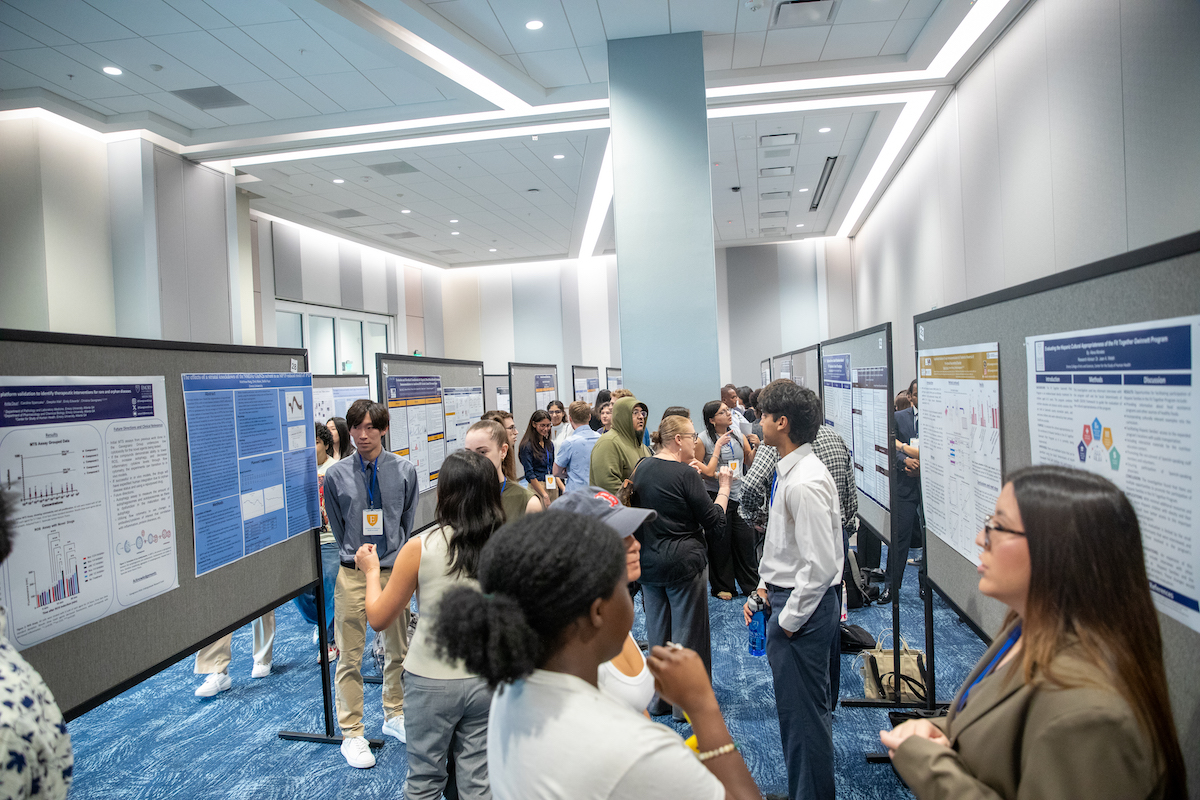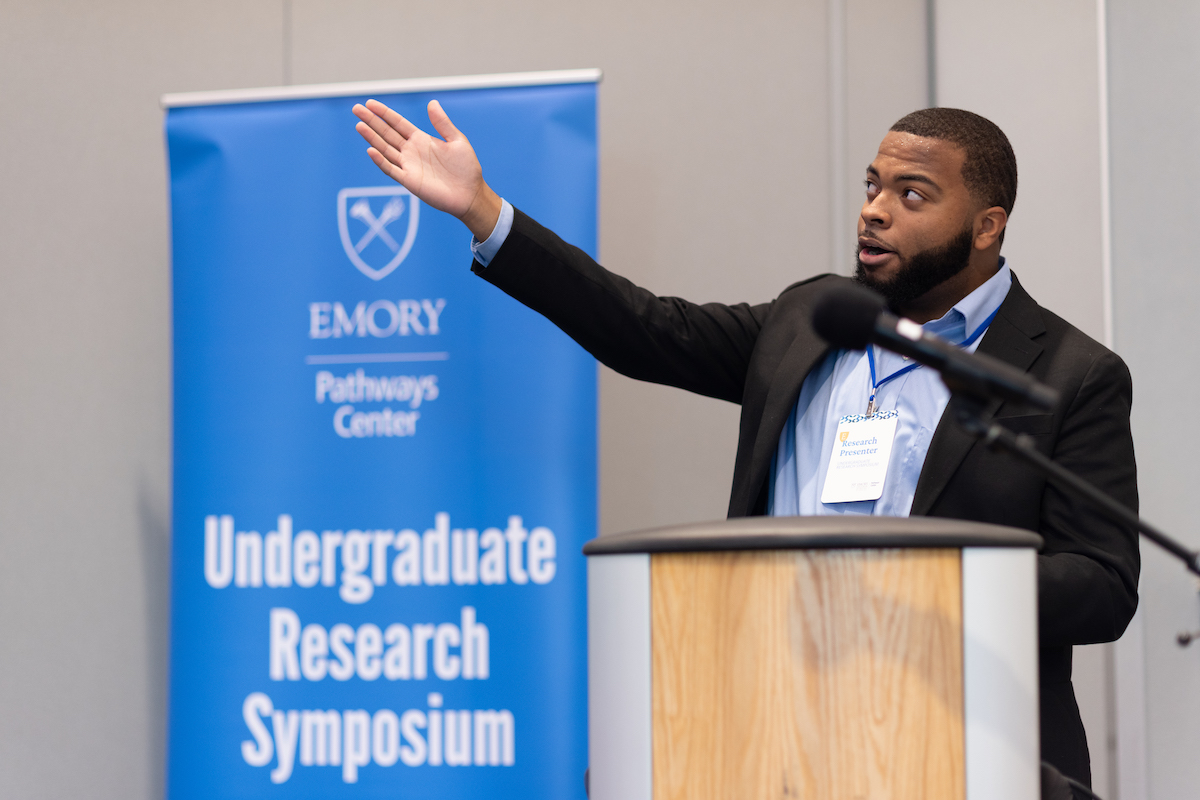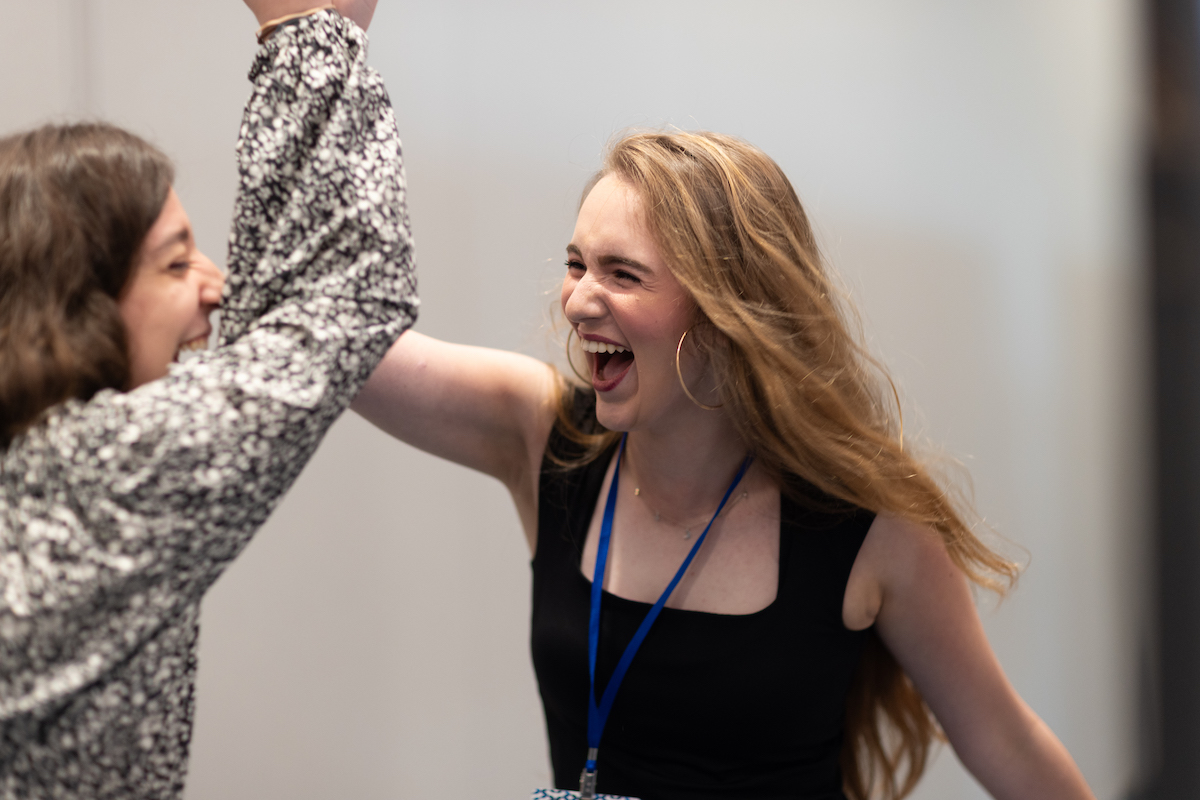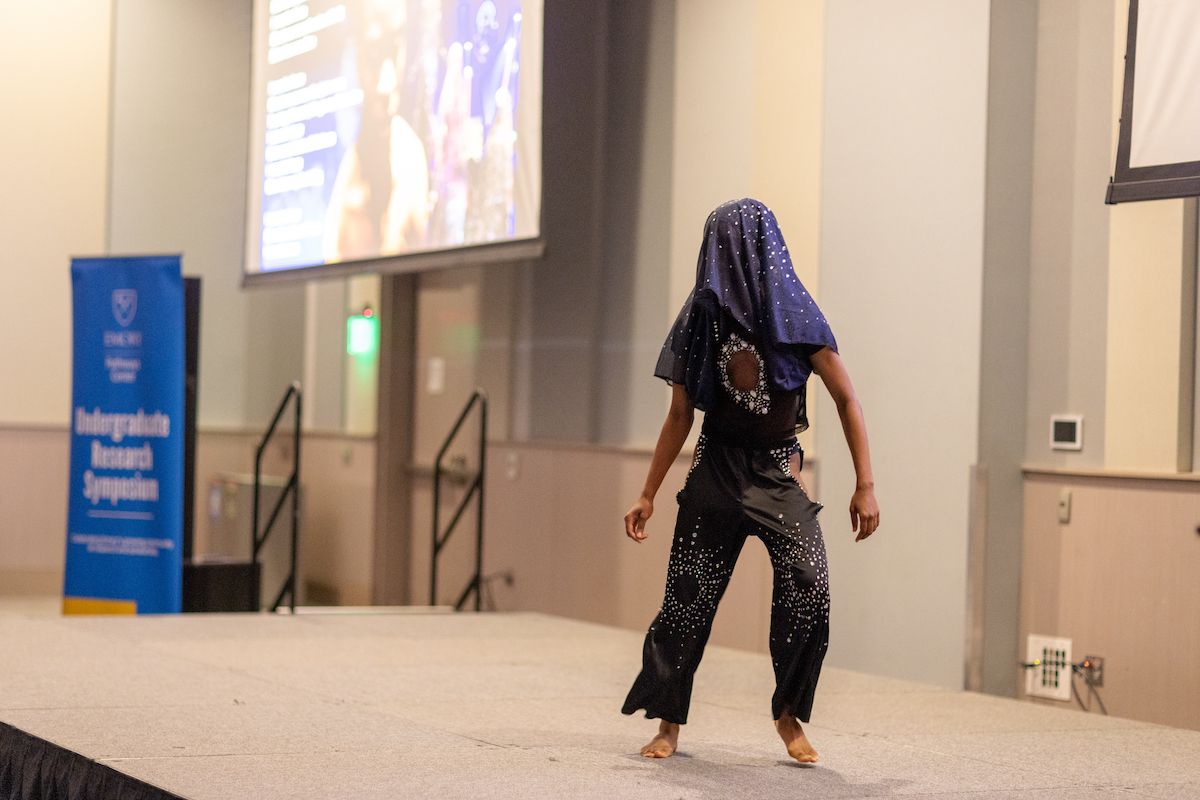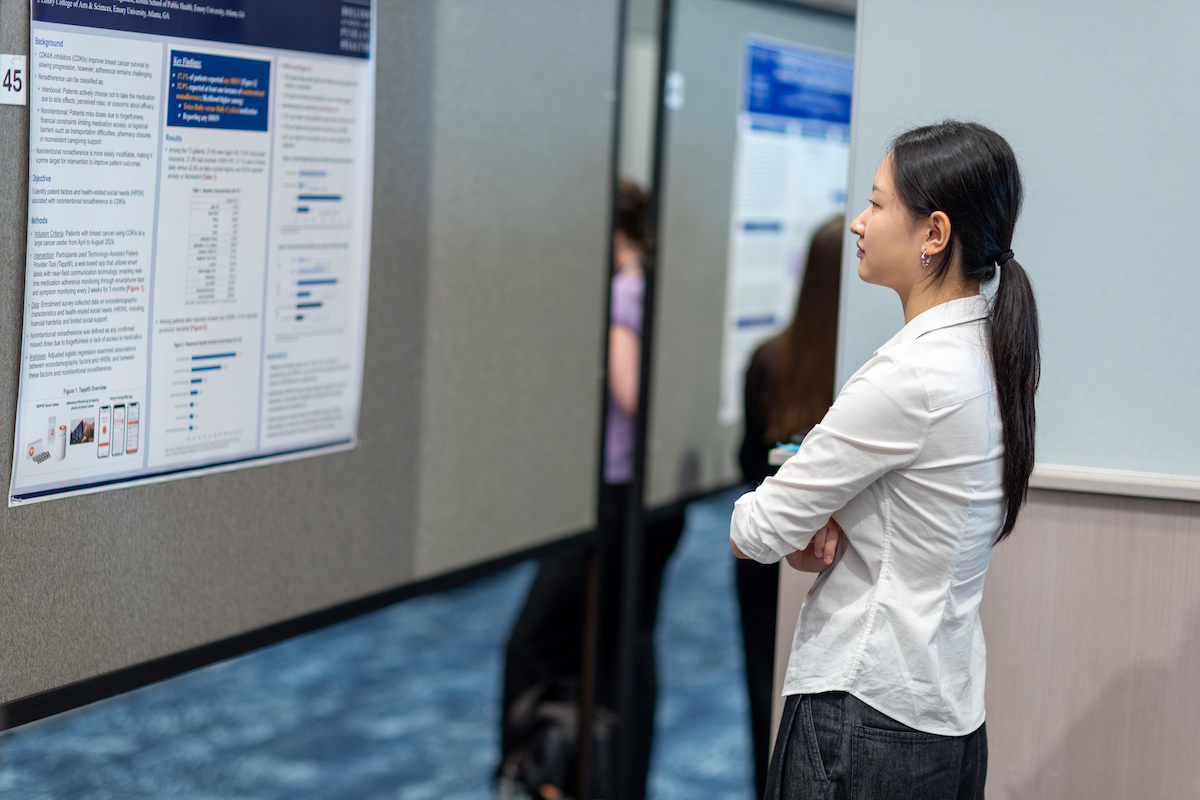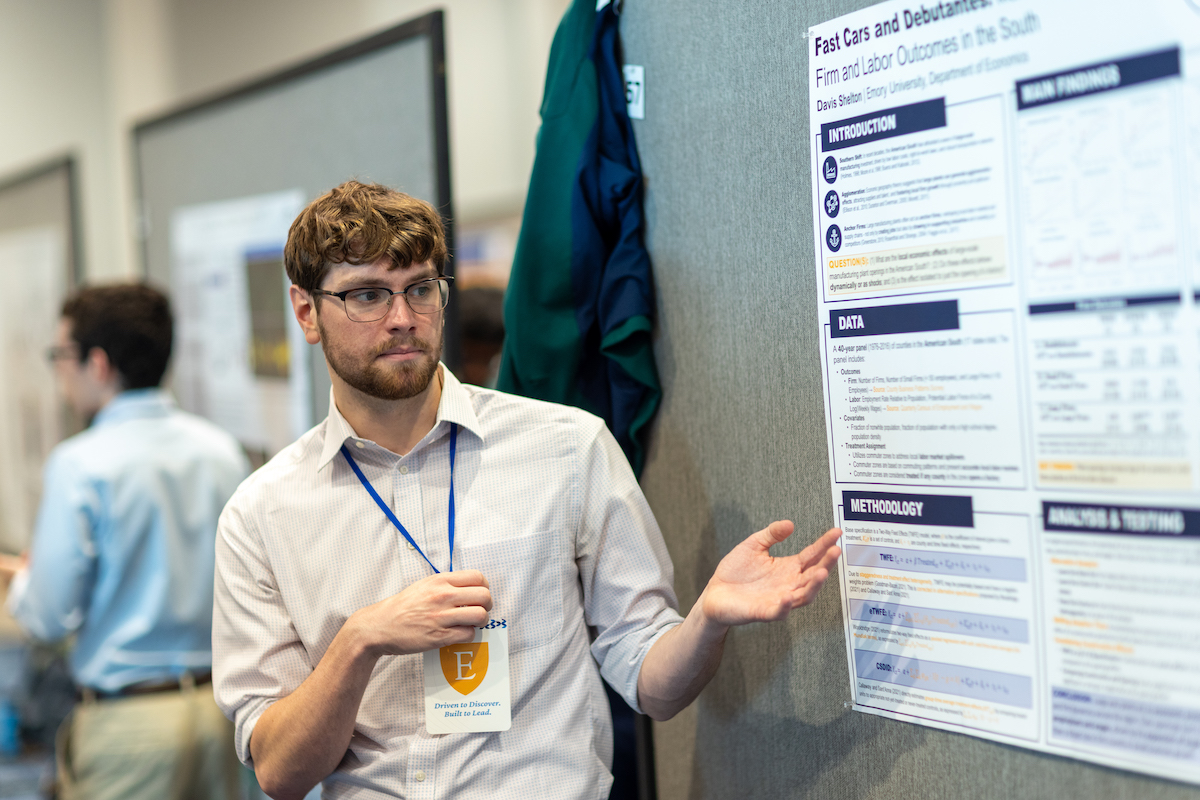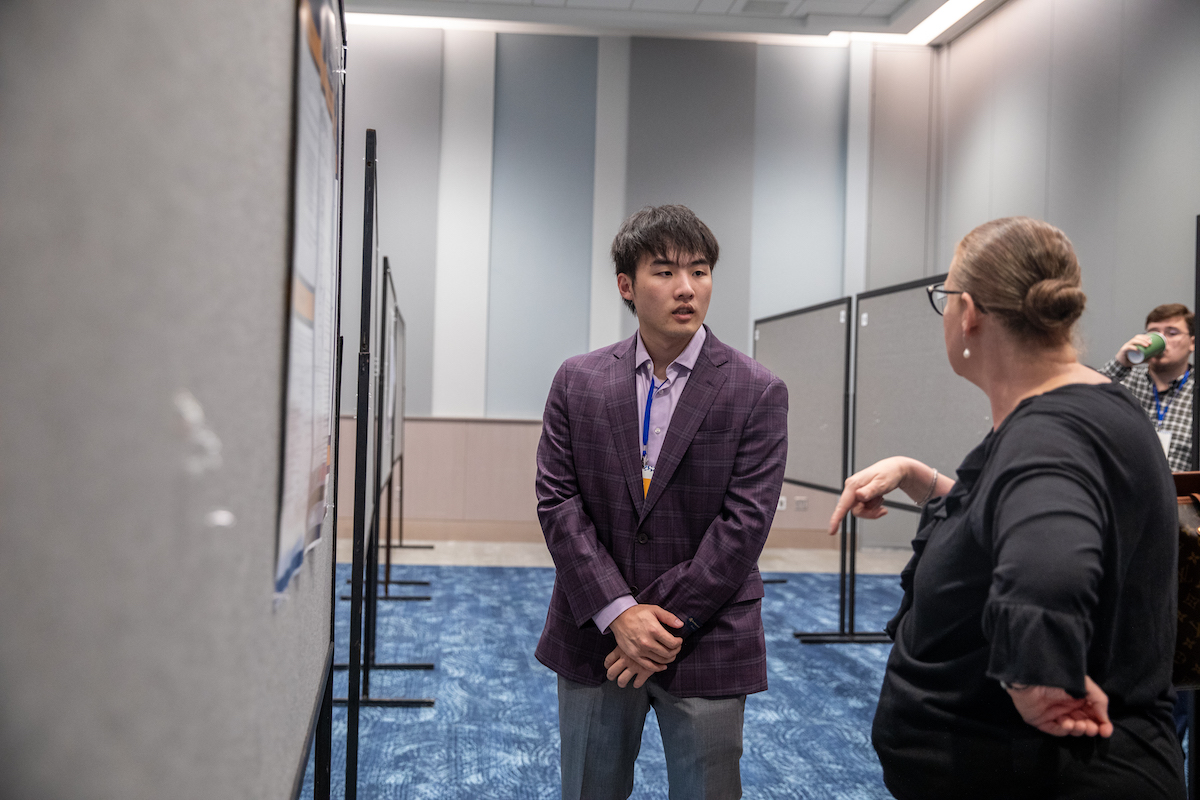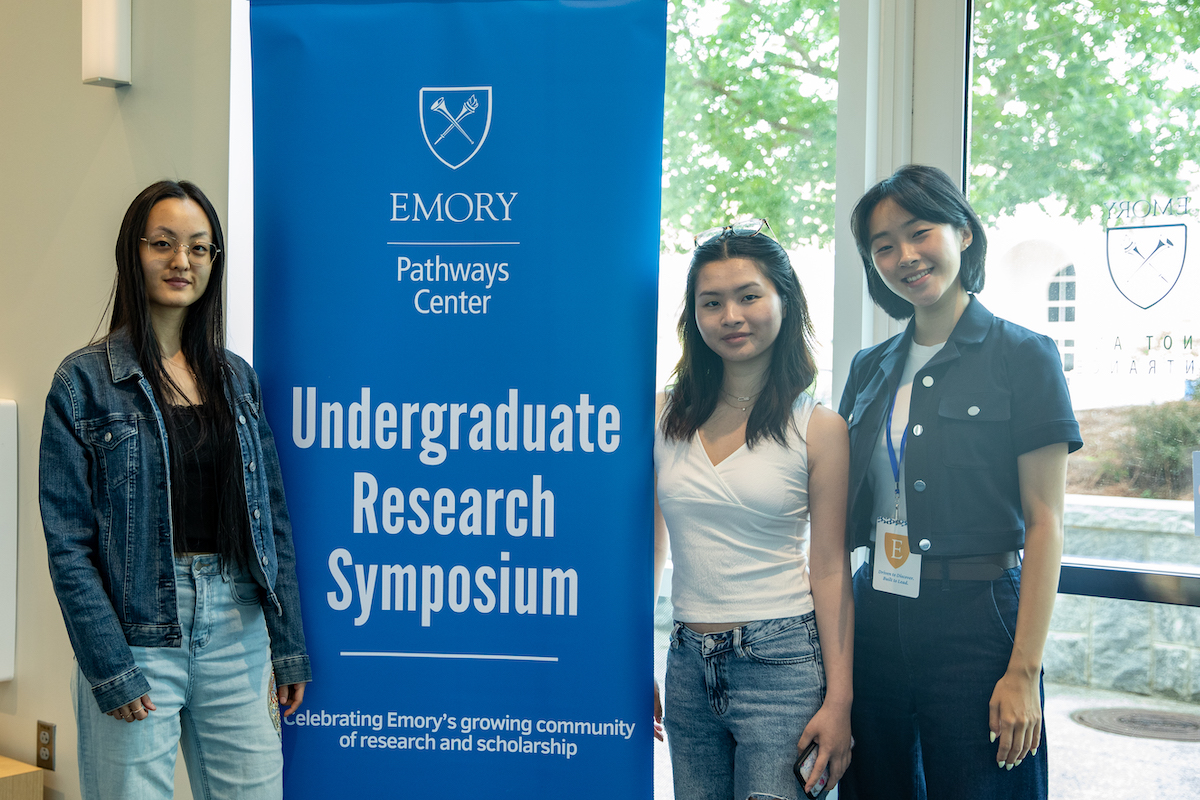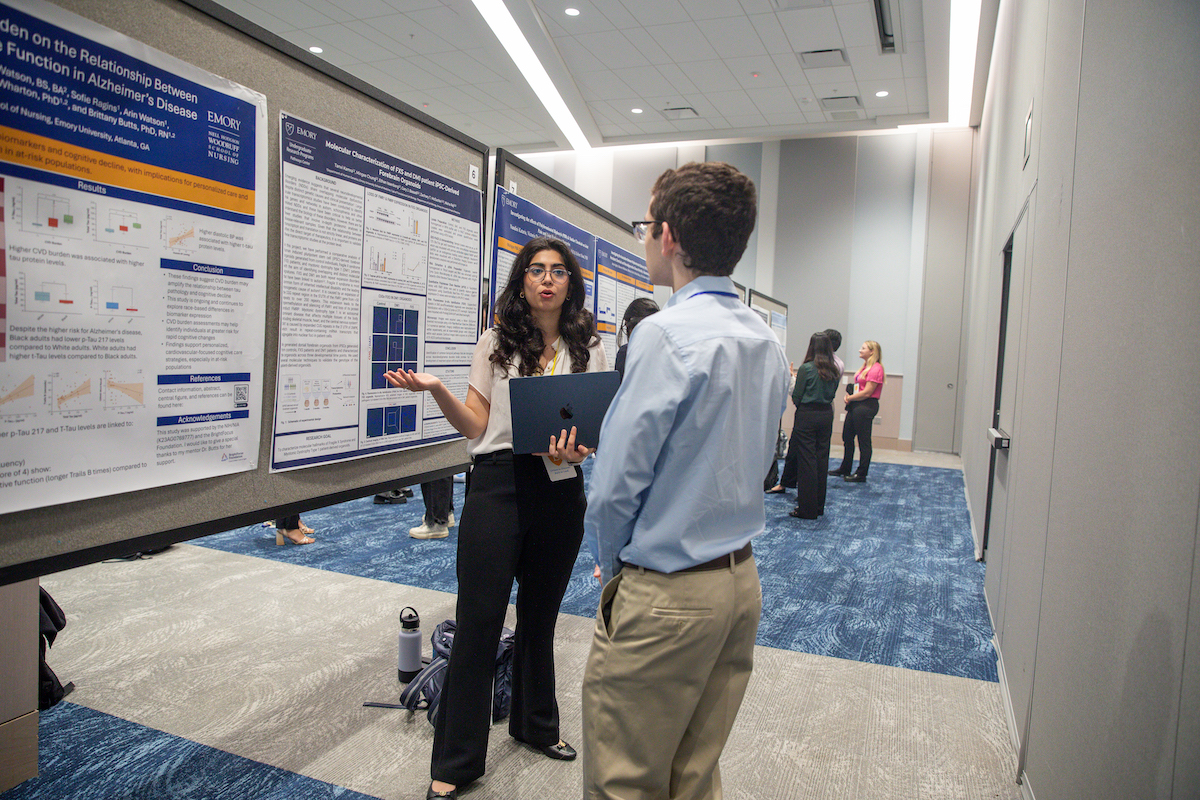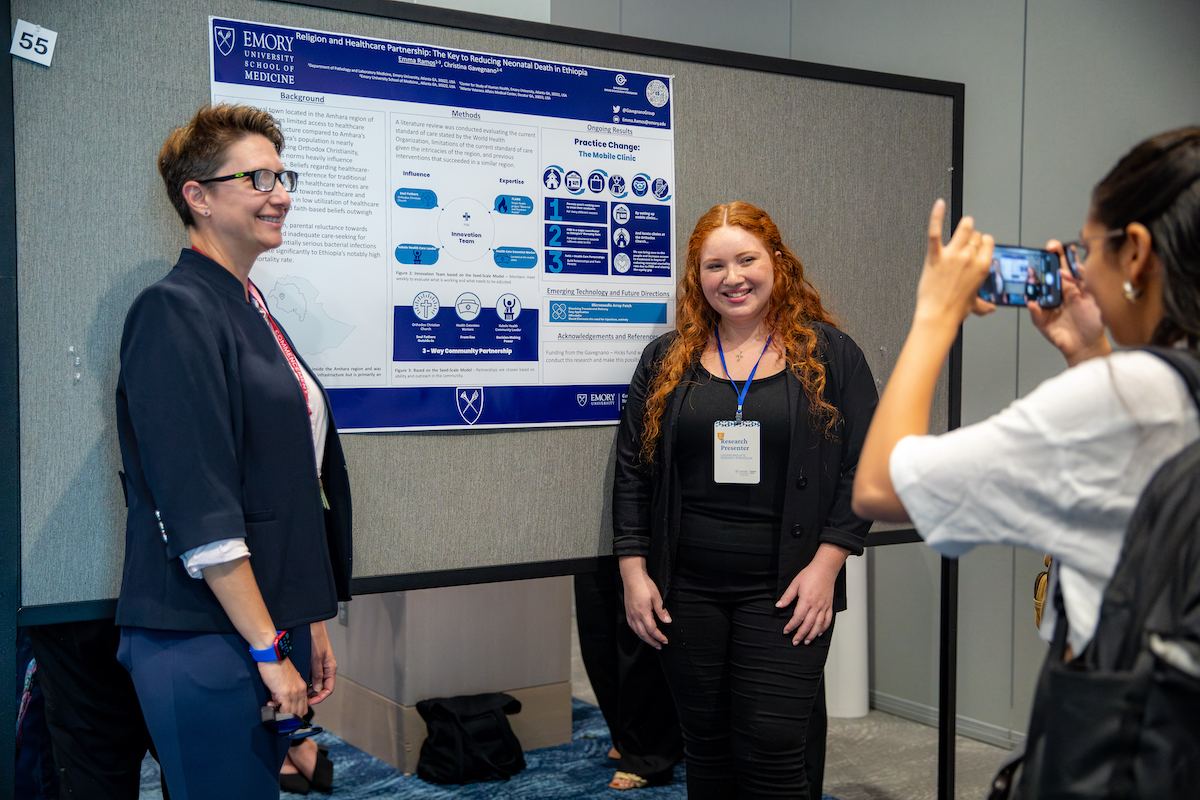Myles Dudley knew about the role enzymes play in contributing to frontal temporal dementia backwards and forwards.
But he was still nervous as he painstakingly laid out his theories to a room full of his peers, faculty and family at Emory’s recent spring Undergraduate Research Symposium.
“I was scared to say something wrong,” Dudley said just moments after concluding a 10-minute summation of his research project, “Investigating Protease Inhibitor Effects on TMEM106B C-terminal Fragment Accumulation.”
“It is really dense, and it was my first time doing a scientific presentation,” he said.
But he relaxed when he looked out into the audience and saw familiar, supportive faces.
“My family and friends were all in the room and it was really nice,” said Dudley, a rising junior majoring in biology. “I feel like it was a really great way to give a first presentation.”
Nearly 100 students participated in the annual undergraduate research event, which highlights work in a broad spectrum of areas, including the arts, humanities, social sciences, mathematics, computer science, public health and biomedical sciences.
Participants shared their work through oral presentations, visual arts, live performances and posters outlining their research and findings. The event helps students hone their presentation skills, receive peer feedback and improve their research through new exchanges of ideas.
“The symposium is the culmination of a year’s worth of creativity, dedication and hard work by undergraduates from a wide range of disciplines, developed through the Scholarly Inquiry and Research Experience (SIRE) Program and other academic courses,” said Dominick Rolle, director of Undergraduate Research Programs for Emory College’s Pathways Center.
“It’s a robust opportunity for undergraduates to develop a scholarly community within Emory, in which undergraduate research is at the helm,” Rolle said.
Many disciplines converging under one roof
Ilo Elder, a 2025 honors graduate with a dual degree in movement studies as well as women’s, gender and sexuality studies, enthralled a packed student center ballroom with a choreographed performance. Rooted in research into the liberatory power of Afro-diasporic dance, the piece also served as their honors thesis. Elder’s performance was introduced by their faculty advisor and mentor, Julio Medina, assistant professor of dance.
Elder knew about Afro-diasporic dance from having practiced West African and Afro-Caribbean dance informally before college, but says Emory provided new training in dance form and the importance of correct movement.
“As the audience saw, there is a lot of footwork that goes on,” Elder says.
Rising junior Larissa Yue, a quantitative sciences student with a track in neuroscience and behavioral biology, stood with pride by her poster on the effects of the “Glutamate Delta-1 Receptor Knockout on the Ultrastructure of the Thalamostriatal Glutamatergic Synapses in the Mouse Striatum.”
Her research examined how turning off Glutamate Delta-1 receptors, which are involved in transmitting neurons and information, may affect the structure of synapses in the mouse striatum — a critical area in the brain for executive function and motor control.
She said she wanted it to be comprehensive and make it accessible for visitors to understand the problem her research attempts to solve.
“Being able to present something that I am so passionate about is really fulfilling,” she said.
Talk to Yue a little more and she will tell you that her interest in the research stems from volunteering at senior facilities and working with patients with neurogenerative diseases.
“I think it’s important to realize there are real people who are facing these issues who are losing mobility and being able to see the implications of that,” she said.
Melissa Leon Tamara, a second-year student studying human health and epidemiology with a minor in French, studied the challenges Canadian providers experience when delivering mental health resources and other services to transgender communities in Toronto and Montreal. The research included a look at the role of language since English is the primary language in Toronto, while French is the official language in Montreal.
“Having these experiences through the SIRE program at Emory has been very rewarding because I got to work closely with my professor,” said Tamara about her mentor Eric Bulakites, an assistant teaching professor in Emory College’s Department of French. “Creating these spaces to have conversations about equitable health care … is very important to me.”
For Leo Mokriski, a rising senior studying mathematics, the symposium was good practice for pitching his work in the future. He shared his research, titled “Loop Representation of Mathematical Knots,” during the morning hours of the conference and received valuable feedback.
He especially appreciated the opportunity to speak with other students and learn how knot theory can be used across disciplines, including applications in biology, chemistry and physics.
“I’m always super interested in seeing how such complex or abstract mathematical problems can apply to real-world scenarios like quantum field theory or in describing genetic information and genetic codes,” he said.
Eliana Liporace said being able to share research is critical in a student’s development. Through Emory, Liporace, a rising junior studying neuroscience and behavioral biology, has already presented at two national conferences, including the Emerging Researchers National Conference in STEM.
Her research focus for the Emory symposium was a poster discussing the impact of metabolic and mitochondrial dysfunction in CDKL5 Deficiency Disorder. CDKL5 Deficiency Disorder (CDD) is a rare neurodevelopmental disorder caused by mutations in the CDKL5 gene. It is characterized by early-onset epileptic seizures, often beginning in the first months of life, and profound motor, cognitive and developmental impairments.
“It’s honestly a privilege to be able to go to a school where I can present my data and have my name recognized,” Liporace said.

